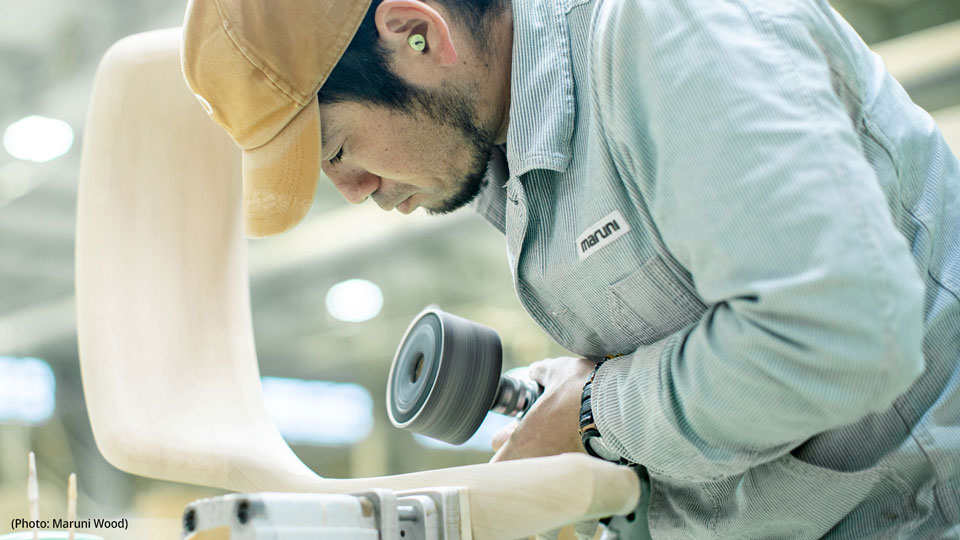By Serena Christiansson, Hague Development and Promotion Section, Hague Registry, WIPO
Founded by 19-year old Gonshiro KUBOTA in 1890, the Japanese corporation 'Kubota' began life as a foundry, manufacturing and selling cast metal products including ductile iron pipes. Today, it has evolved into one of the world leaders in agricultural machinery, small construction machinery and engines. Kubota also provides sustainable solutions in the areas of food, water and the environment in over 120 countries. Kubota’s revenue for the 2020 financial year was 1,853 billion yen (around 17 billion US dollars).
The spirt of Kubota, inherited from its founder more than a century ago, lives on today embodied in its designs. The company’s ideal? To provide unique products that englobe both universal visual appeal and technical excellence.


Then and now – Kubota workforce circa 1890. 130 years later, a modern graphical user interface used with Kubota construction machinery (international registration DM/209 365). (Photos: Kubota)
Challenges to overcome, dreams to fulfill
Kubota’s products, which today range from agricultural and construction machinery through to pipe systems and water treatment equipment, can be found across the globe. From earthquake resistant water pipes in California to food-security solutions in Tanzania, no challenge seems too great. What helps makes this possible? Combining versatile and functional design with close company-customer communication.

"For Earth, For Life" – the Kubota Group promises to continue supporting the prosperous life of humans while protecting the environment of this beautiful earth.
Kubota’s fundamental, hands-on approach to the design of its products, passed down over 130 years, sees its designers really looking at the future from the customer’s point of view. They are constantly adapting their designs to accommodate the changing and future needs of their local target markets. The company’s philosophy is that designs should be:
- future-proof – identifying and catering for issues that have not yet been thought of; and
- functional – no matter how advanced a design may be, if it makes the machinery difficult to use then it serves no purpose.



"Built to perform and built to last" – Kubota's products – all designed with efficiency, performance, comfort and durability in mind – are used all over the world. (Photos: Kubota)
We want our users to experience the value that true innovation brings. Value depends first on the tool serving a useful purpose. This is the role of design in innovation.
Kubota
Designing for the future
Kubota’s concept "Dream Tractor" – the designs for which were released in 2020 – epitomizes the company’s design philosophy.
At first glance it’s far from a traditional design, resembling more something out of a science-fiction movie. For Kubota the fully automated, electric, remotely monitored, green-tech tractor represents the future of smart farming.

The concept tractor not only demonstrates Kubota’s expertise in innovative and cutting-edge design and technology but also its aspirations for the future as a sustainability-related problem-solving game changer.
Design protection – from country road to international highway
All of Kubota’s machinery products (tractors, combine harvesters, rice trans-planters, construction machinery, etc.) feature the Kubota corporate logo – the word 'Kubota' and an oval with a letter ‘K’ in it. Kubota has used design as a means to strengthen the value of its brand, adopting a ‘family look’ strategy with a unified design and orange color palette used across all of its products.
While traditionally Kubota had always filed for national protection of its designs through the Japan Patent Office before seeking protection in overseas markets, with the ever-increasing expansion of its business into the European market, it turned to WIPO’s Hague System to protect a number of its designs. Kubota today owns 34 international registrations and is reaping the benefits.

We are currently mainly filing international applications for the EU, but in our opinion, the more countries we designate in a Hague application, the more advantageous it will be. The fact that we can file one application for multiple designs and in multiple countries has obviously reduced our filing fees and simplified the application process. And, we are able to file applications quickly through eHague without using local agents. We use our design rights effectively as a countermeasure against imitation. As our overseas sales are rapidly increasing, this is really good news for us.
Shinobu Nakanishi, IP Department, Kubota
Kubota – designing products and services that are one step ahead so that people and the earth can co-exist with sustainability and prosperity.
About the Hague System
WIPO’s Hague System provides a unique international mechanism for securing and managing design rights simultaneously in multiple countries or regions through one application, in one language with one set of fees.
Find out more
- How the Hague System works
- Filing international applications and renewing international registrations
- Managing international registrations
- International Designs Bulletin
- Contact Hague
(July 1, 2021)



